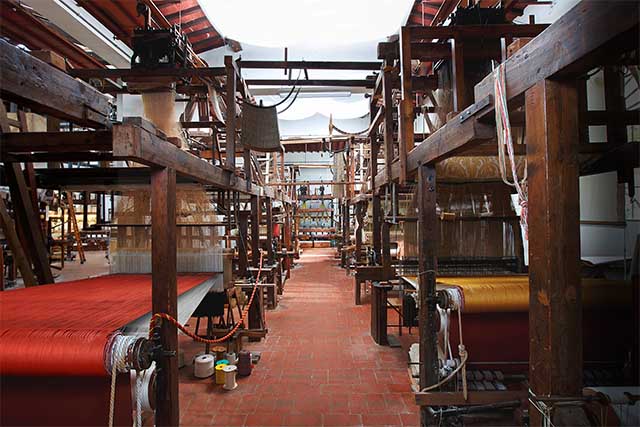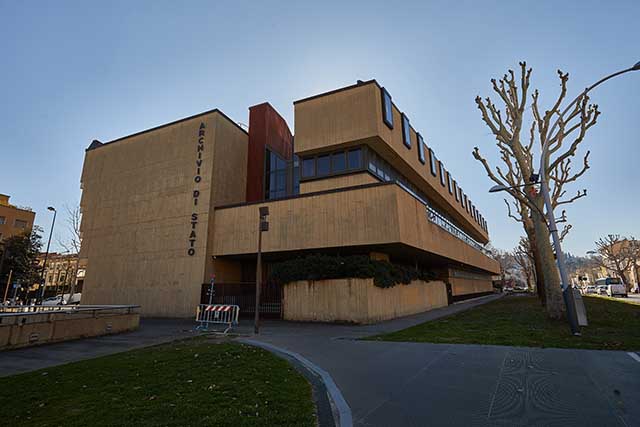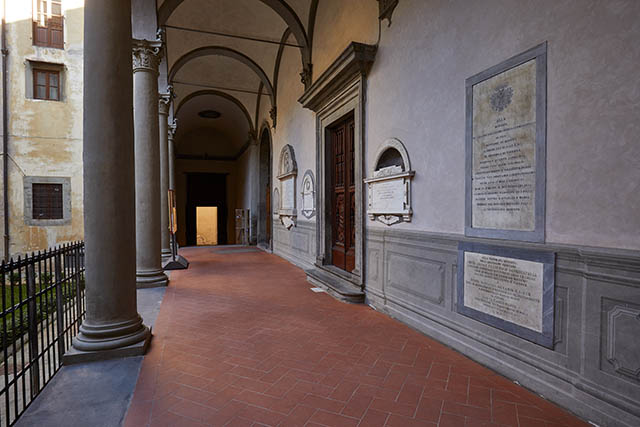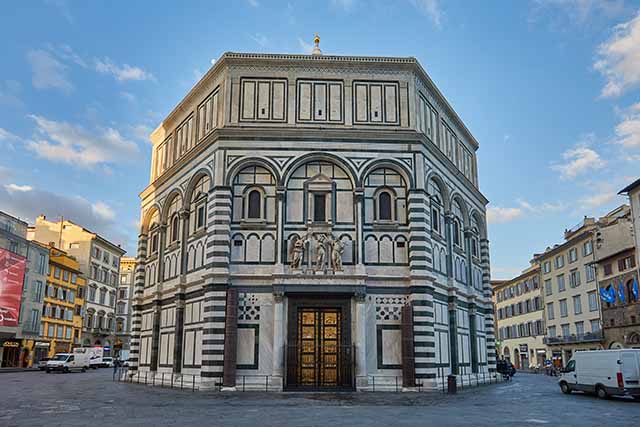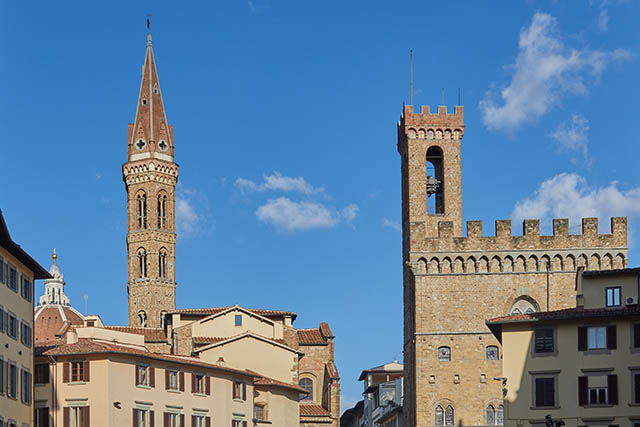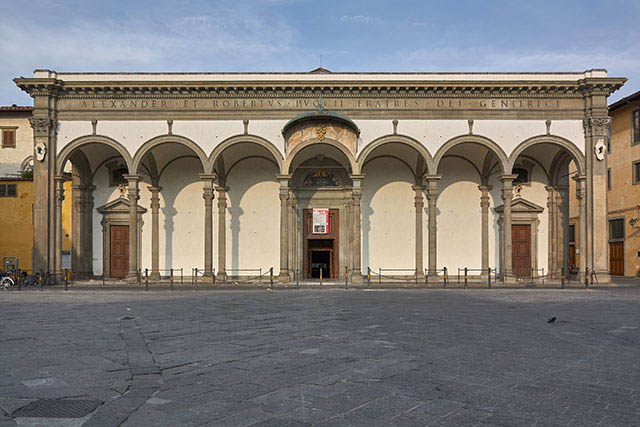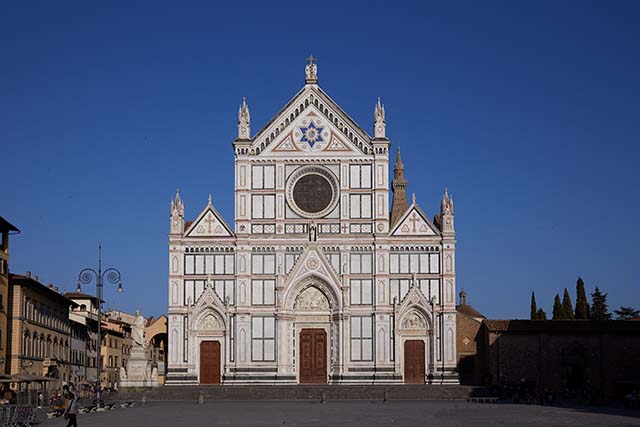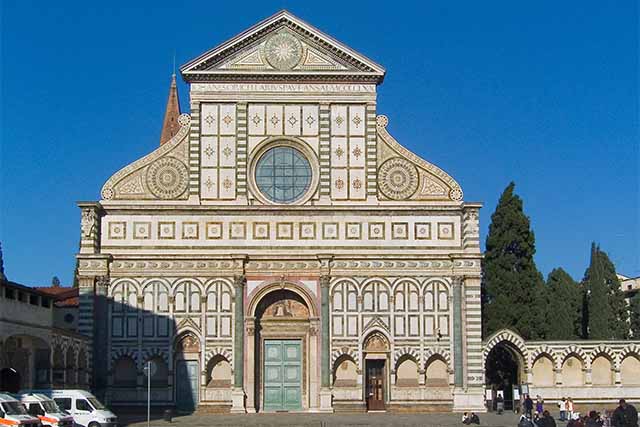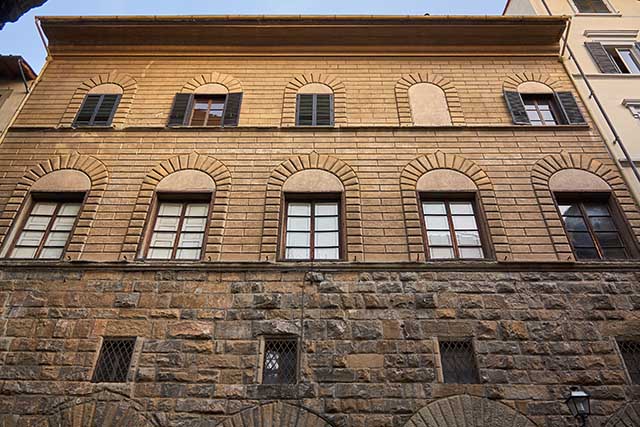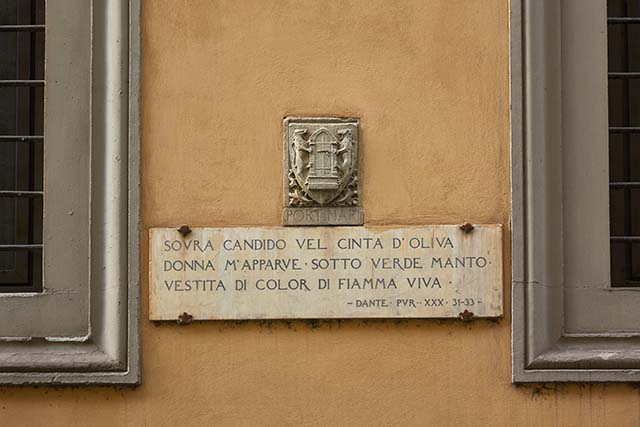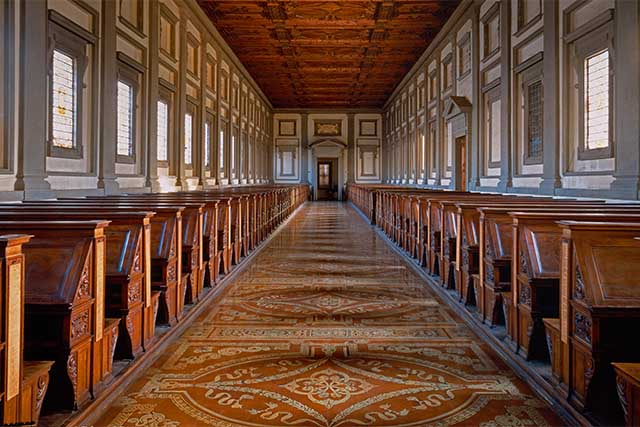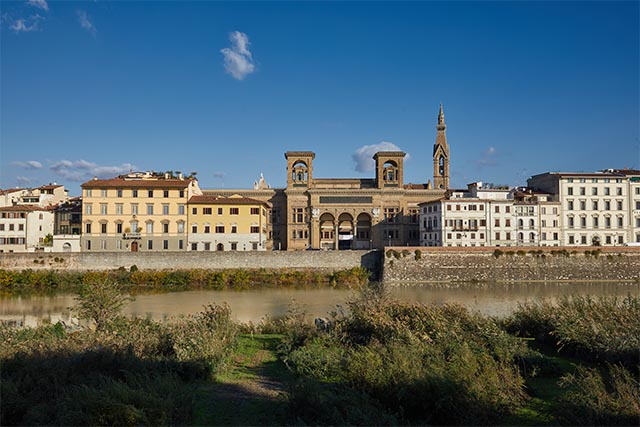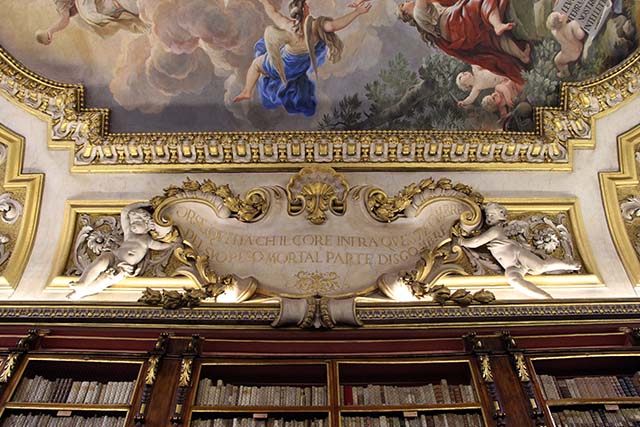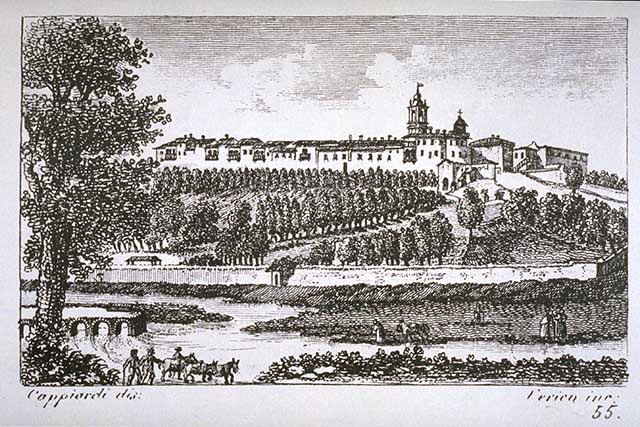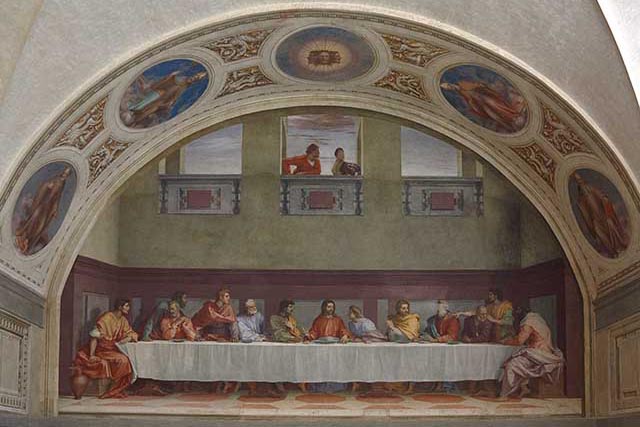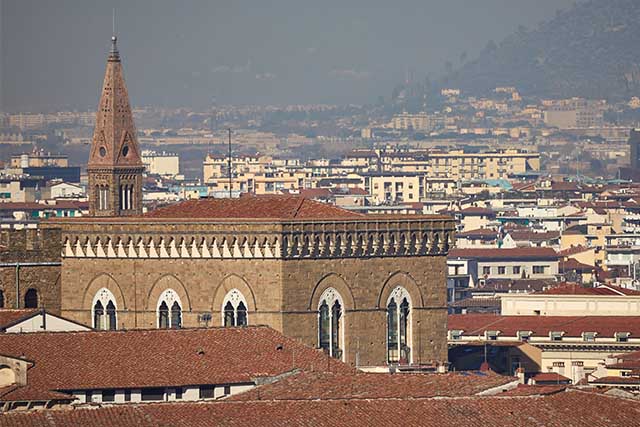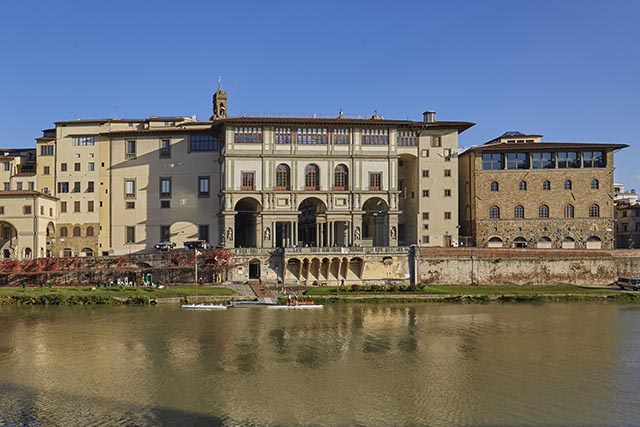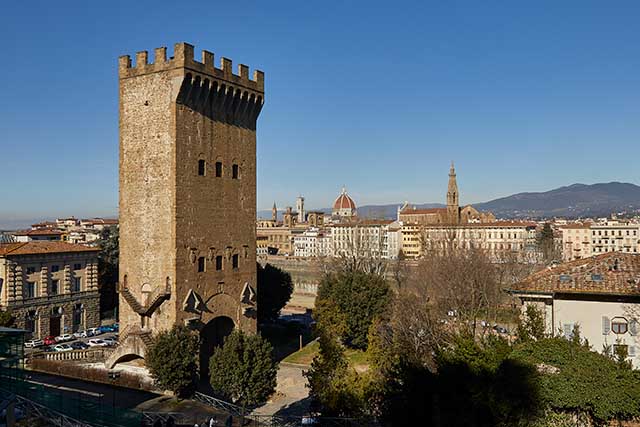Municipality of Florence
In Florence there are many place names deriving from the activities controlled by the rich and powerful Arte della Lana: Via and Piazza del Tiratoio (drying shop), Via dei Tessitori (weavers) Via dei Cardatori (carders), and Corso dei Tintori (dyers). Silk-working instead had been controlled by a powerful mercantile guild, the recollection of which has survived thanks to the work of the Antico Seticio Fiorentino (ancient Florentine silk manufactory). This manufactory, established near the end of the 18th century still works with a weaving machine that, according to ancient tradition, derives from the drawings of Leonardo, and still produces rare and precious fabrics using techniques dating from the 15th and 16th centuries.
Noteworthy among its vast collection of documents are: the certificate of Leonardo's birth and baptism, the notarial deeds drawn up by his father Ser Piero, a notary, and those of the trial for sodomy., together with many papers related to the artistic activity of Leonardo.
The Da Vinci family tomb was in the Badia Fiorentina: Ser Piero was buried here in 1504. The first burial was that of Ser Piero’s second wife in 1474; the last one of a great-grandson, in 1614. In total there were at least 21 burials. The Badia was transformed in the 17th century and the traces of the tomb were lost.
The elevation of the monument, imagined by Leonardo, actually had precedents: a few years earlier, in 1455, the Bolognese engineer and architect Aristotile Fioravanti had successfully moved a tower in Bologna. Fiorovanti had also worked for some of Leonardo's friends and clients. Leonardo's project called for raising the Baptistery on four steps, as can be seen in a drawing attributed to Francesco Granacci (now in the Uffizi Cabinet of Drawings and Prints) and in two replicas of the Baptistery published in the Discorsi [Discourses] of Vincenzo Borghini.
The Bargello was the Palazzo del Podestà in Leonardo's time. His father Ser Piero exercised his profession of notary there. It was precisely here that Bernardo di Bandino Baroncelli, one of the members of the Pazzi Conspiracy, was executed. Leonardo portrayed him dead in the famous Impiccato, a drawing preserved in the Musée Bonnat at Bayonne in France.
Returning to Florence in 1500, Leonardo settled in the convent of the Santissima Annunziata, having been commissioned for executing the paintings for the high altar of the church: Vasari informs us that in those rooms he worked on the cartoon of the Saint Anne, very much admired; the location of the latter, which is not the one now in the National Gallery of London, is still unknown.
This extraordinary architectural complex contains a series of masterpieces admired by Leonardo, such as the cycle of frescoes by Giotto and the Crucifix of Cimabue in the refectory, or Brunelleschi's Pazzi Chapel taken by him as model. In the Codex Atlanticus an enigmatic annotation refers to a work commissioned to Leonardo for Santa Croce.
In the fall of 1503 Leonardo was given the keys to the Pope's Room in Santa Maria Novella, where he was to make the preparatory cartoon for the Battle of Anghiari. The cartoon was then brought to Palazzo Vecchio, where it was used for transferring the composition onto the wall. The greatest artists of the early Renaissance had worked in Santa Maria Novella, which certainly represented a fundamental lesson for Leonardo.
As reported by Vasari, it was in Palazzo Benci that Amerigo Benci kept for years the unfinished Adoration of the Magi. The same Amerigo Benci had commissioned Leonardo to paint a portrait, now in the National Gallery of Art in Washington, of his daughter Ginevra. In several manuscripts Leonardo mentions among his companions a certain "Giovanni di Amerigo Benci".
Folco Portinari was the father of the Beatrice immortalised by Dante. The family, which had close ties with Flanders, brought the famous Portinari Triptych of Hugo van der Goes to Florence. This work, now in the Uffizi, was destined to exert a powerful influence on Leonardo. Due to his thorough knowledge of the customs of the people of northern Europe, Leonardo turned to one of the Portinari to find information on ice-skating.
Designed by Michelangelo, the Library contains the bibliographic materials collected by Cosimo the Elder and Lorenzo the Magnificent. One of the library's treasures is the Trattato di architettura civile e militare [Treatise on civil and military architecture] by Francesco di Giorgio Martini, with five autograph postils by Leonardo.
The Biblioteca Nazionale Centrale di Firenze (National Central Library of Florence) preserves the first detailed biography of Leonardo, attributed to the Anonymous Gaddiano, and other fundamental material for the knowledge of Leonardo and the Renaissance. On the façade is a series of medallions dedicated to famous personages, including Leonardo da Vinci.
The collection of material pertaining to Leonardo da Vinci in the Biblioteca Riccardiana owes its origins to a member of the family – Riccardo Romolo Riccardi – who in 1659 acquired the imposing Palazzo di Via Larga (now the Palazzo Medici Riccardi in via Cavour) from the Medici family. In the collection, which comprises valuable manuscripts and autograph works by Petrarch, Boccaccio, Savonarola and many illustrious humanists, there are various references to Leonardo.
Indicated by Leonardo in several documents, the Certosa is one of the most important religious and artistic centres in the vicinity of Florence. Appearing as an industrious citadel of faith, it preserves works by great artists, especially from the 15th and 16th centuries.
This is the only church outside the city's walls that was not razed to the ground during the siege of 1529. The Baptism of Verrocchio, which comes from here, shows the participation of Leonardo in the landscape, in the angel on the left, in the figure of Christ and in other details. In the building of Romanesque origin is the Last Supper of Andrea del Sarto.
Works of the circle and of Leonardo's workshop and school are found in the Galleria Palatina at the Palazzo Pitti, in the Museo Horne, in Palazzo Vecchio and in the Museo del Bigallo. In other Florentine museums, palaces and churches are works of fundamental importance for reconstructing the artistic and cultural context of Leonardo's time. In the Museo Nazionale del Bargello, for instance, are displayed works by Verrocchio in which the participation of Leonardo, or an iconography of his, has been suggested. Works of applied art with documentary or iconographical references to Leonardo are found in the Tesoro dei Granduchi (former Museo degli Argenti) and in the Museo Stibbert.
In the new suggestive Room 35 of the Uffizi Gallery, dedicated to Leonardo, there are three famous works: the Annunciation, the Baptism and the Adoration of the Magi, last work of his first Florentine period. In the Uffizi's Cabinet of Drawings and Prints, several drawings and sketches by Leonardo are found (visible only with special permission or on the occasion of exhibitions); other drawings are attributable either to the Florentine Leonardesque school or to the Milanese circle.
Clockwise, starting from the course of the Arno, upstream of Florence, Leonardo indicates on RL 12681 (Windsor Castle), which represents in a schematized form the second city wall of the communal age, 5 doors still existing on the left bank of the Arno.





